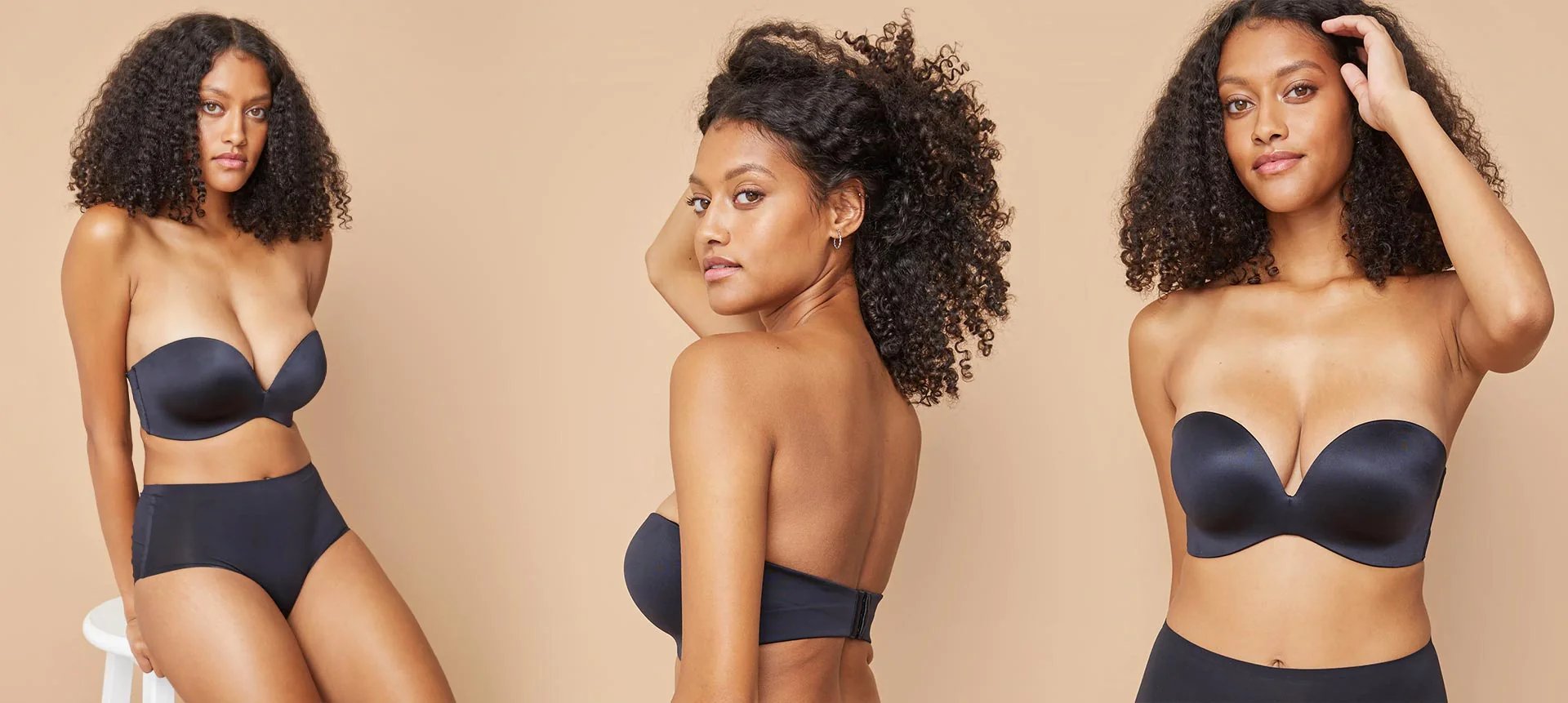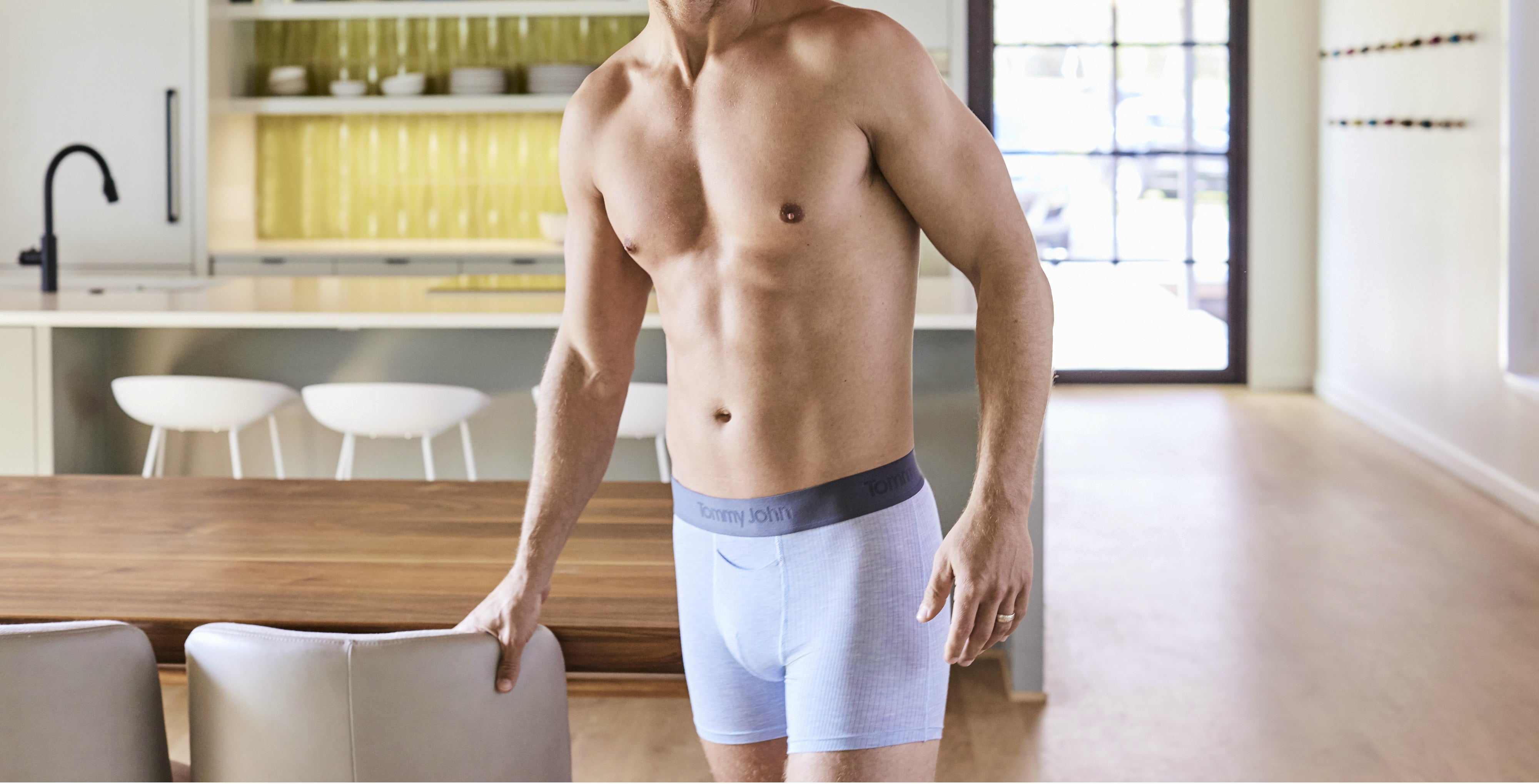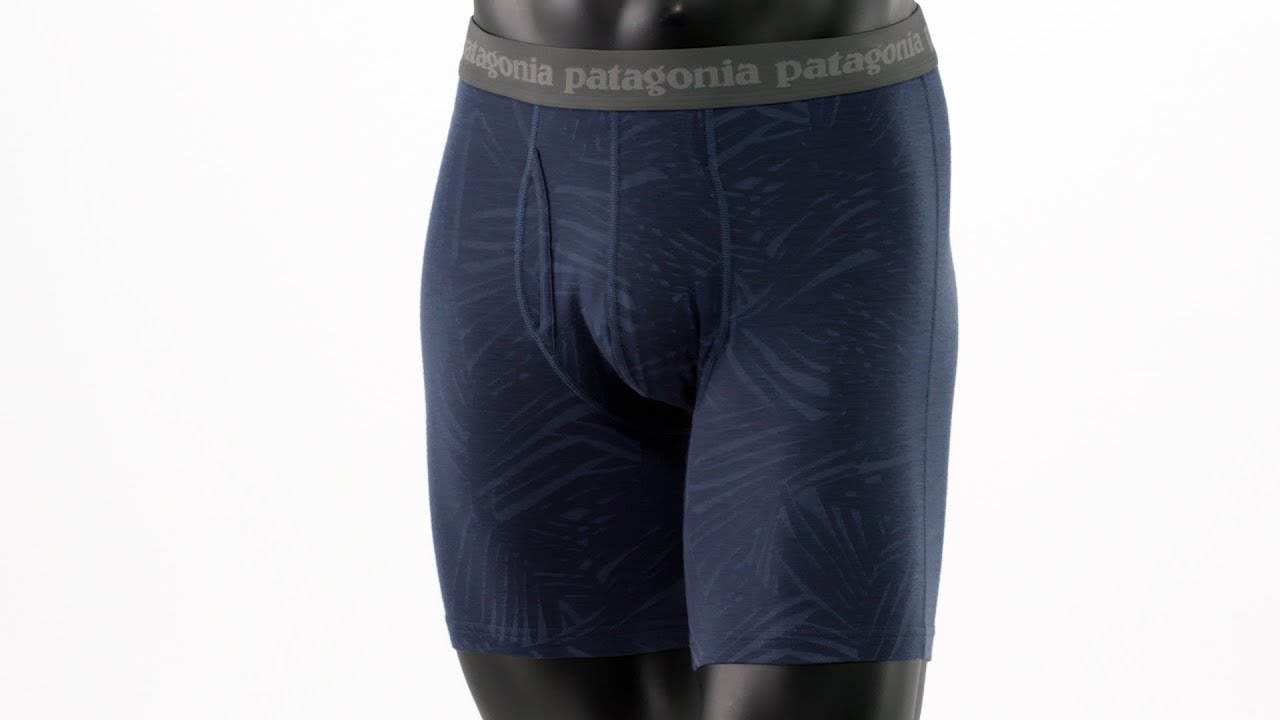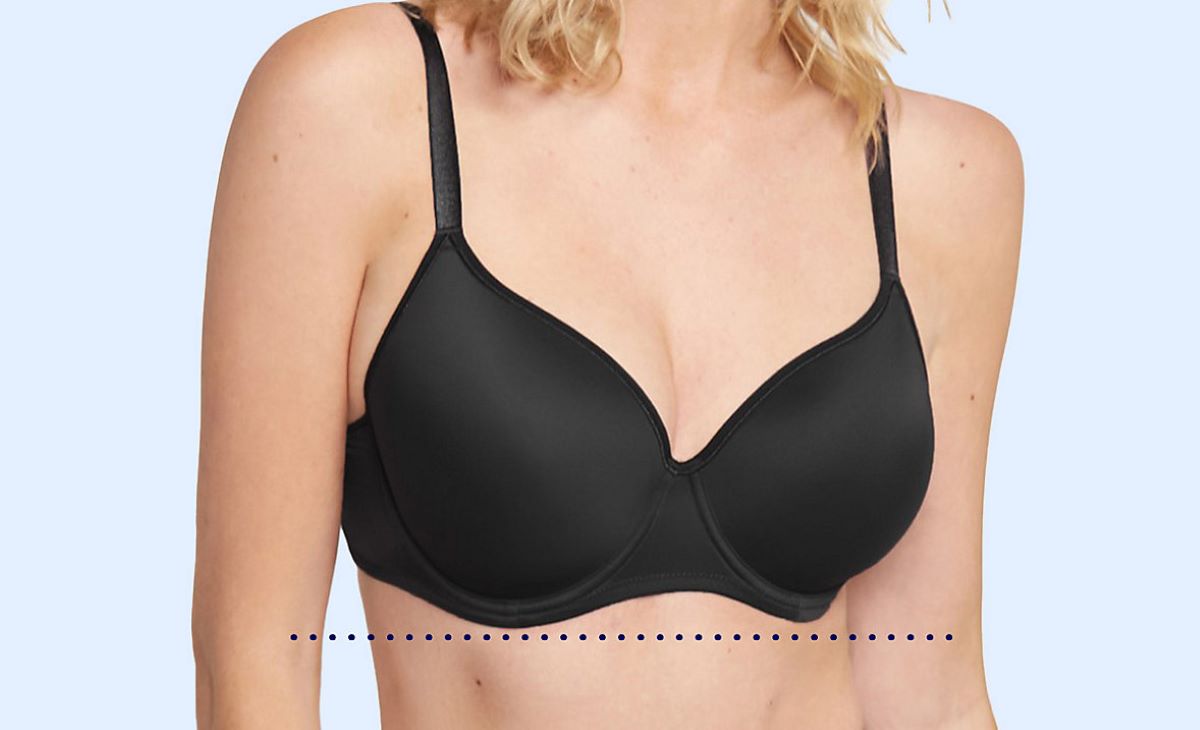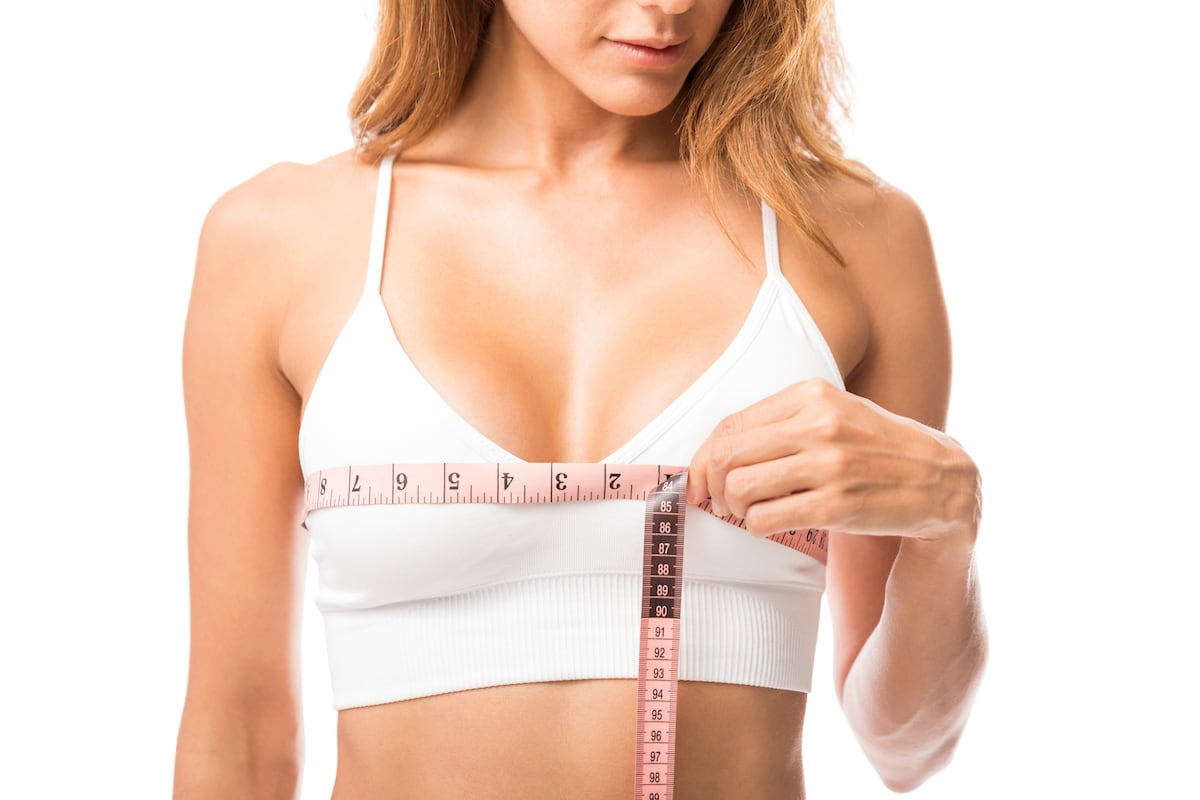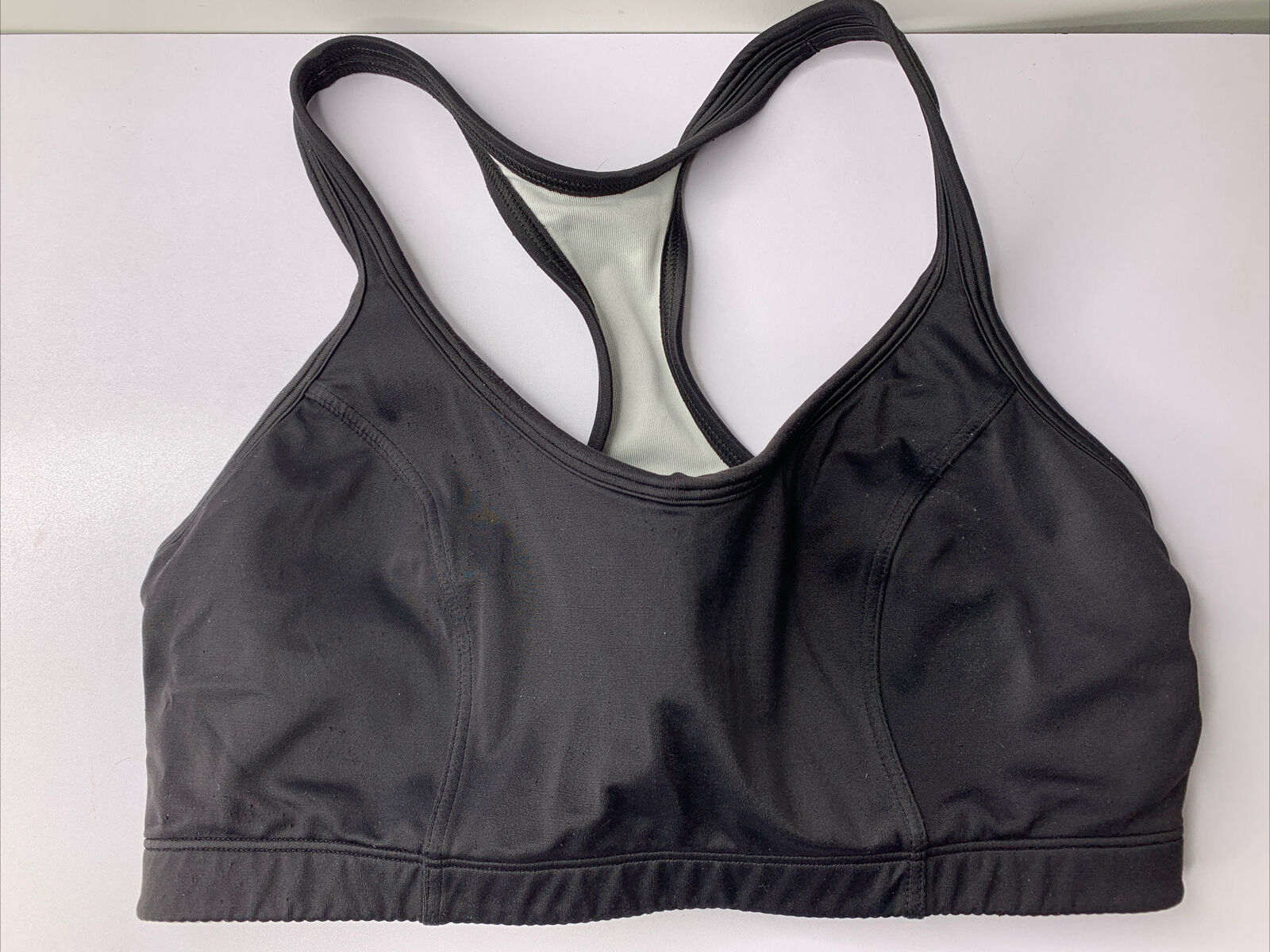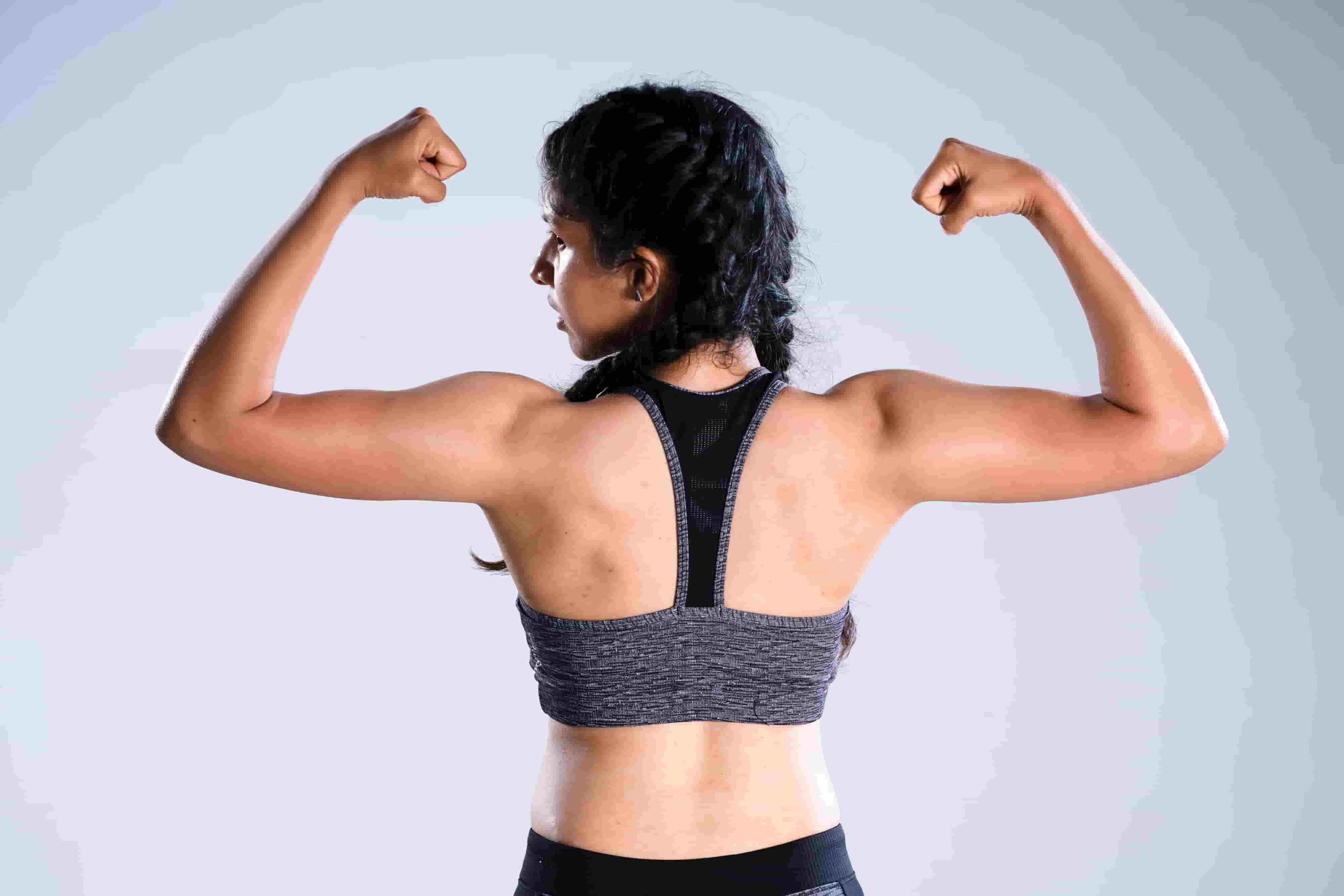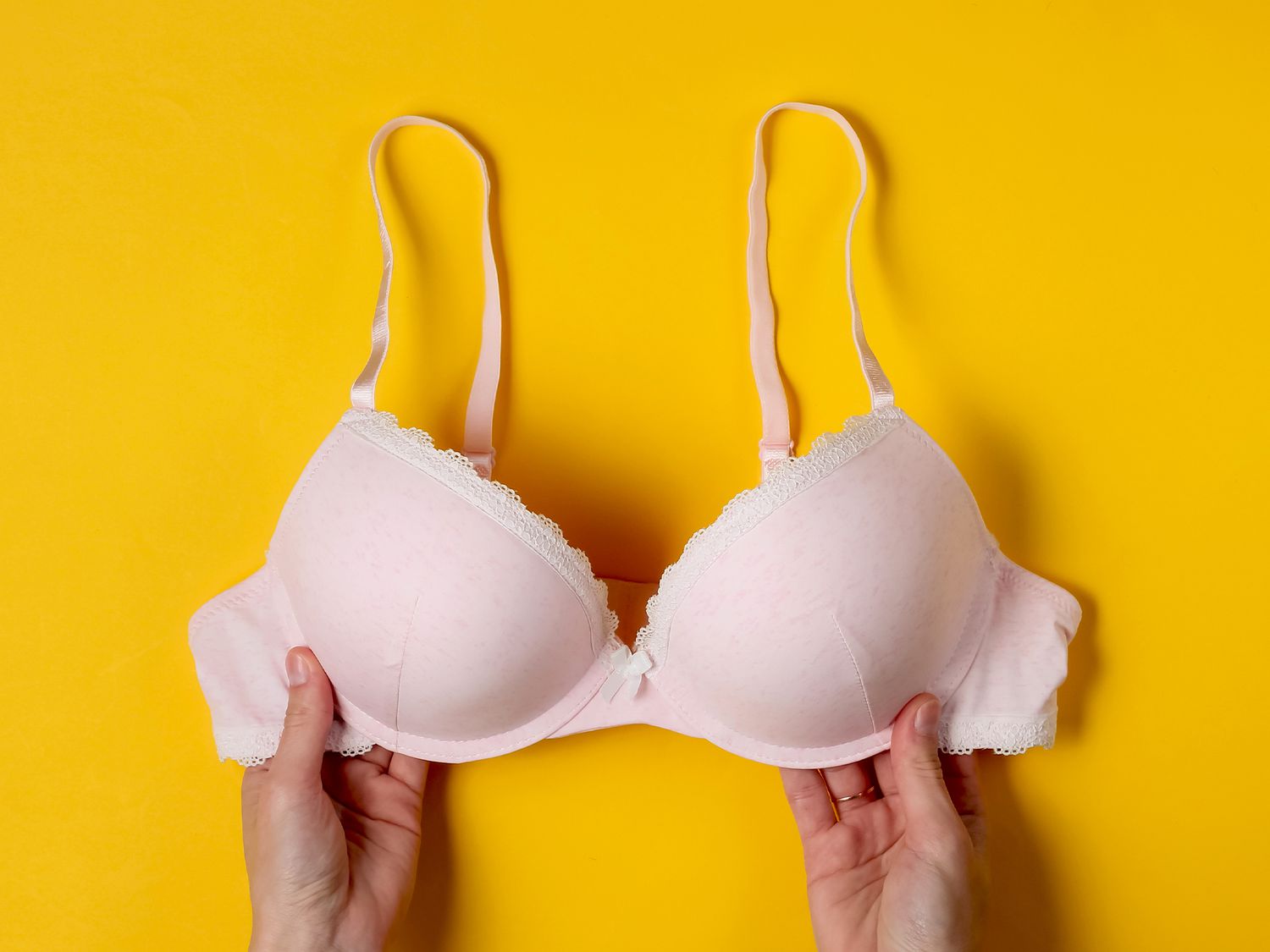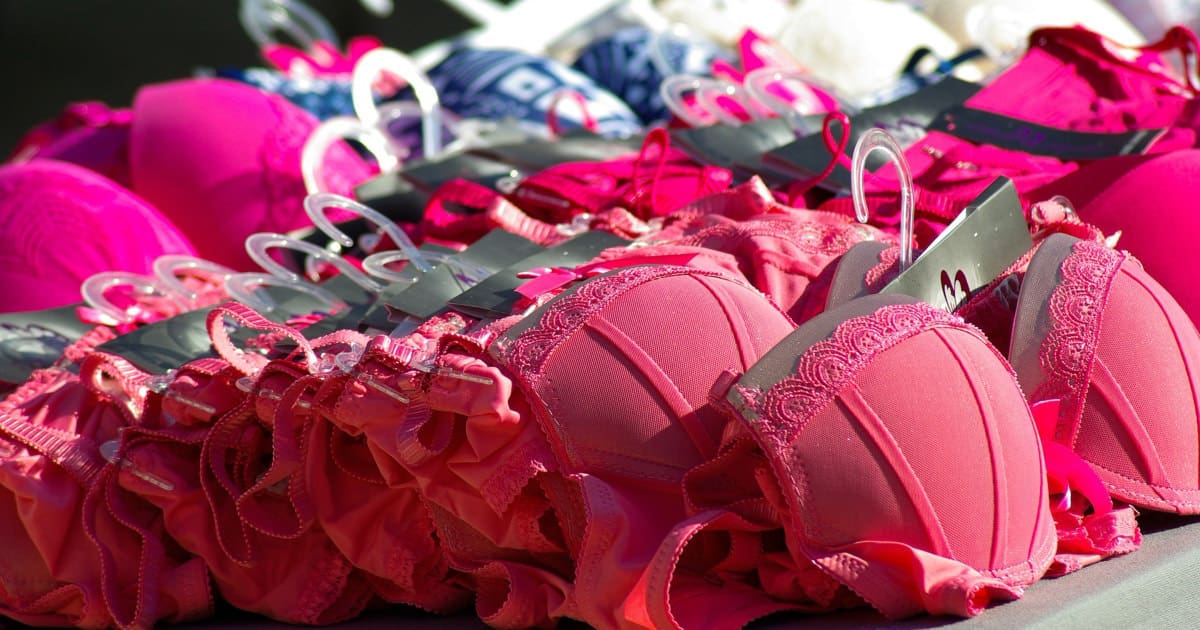Home>Buying Guides>How Should A Bra Cup Fit
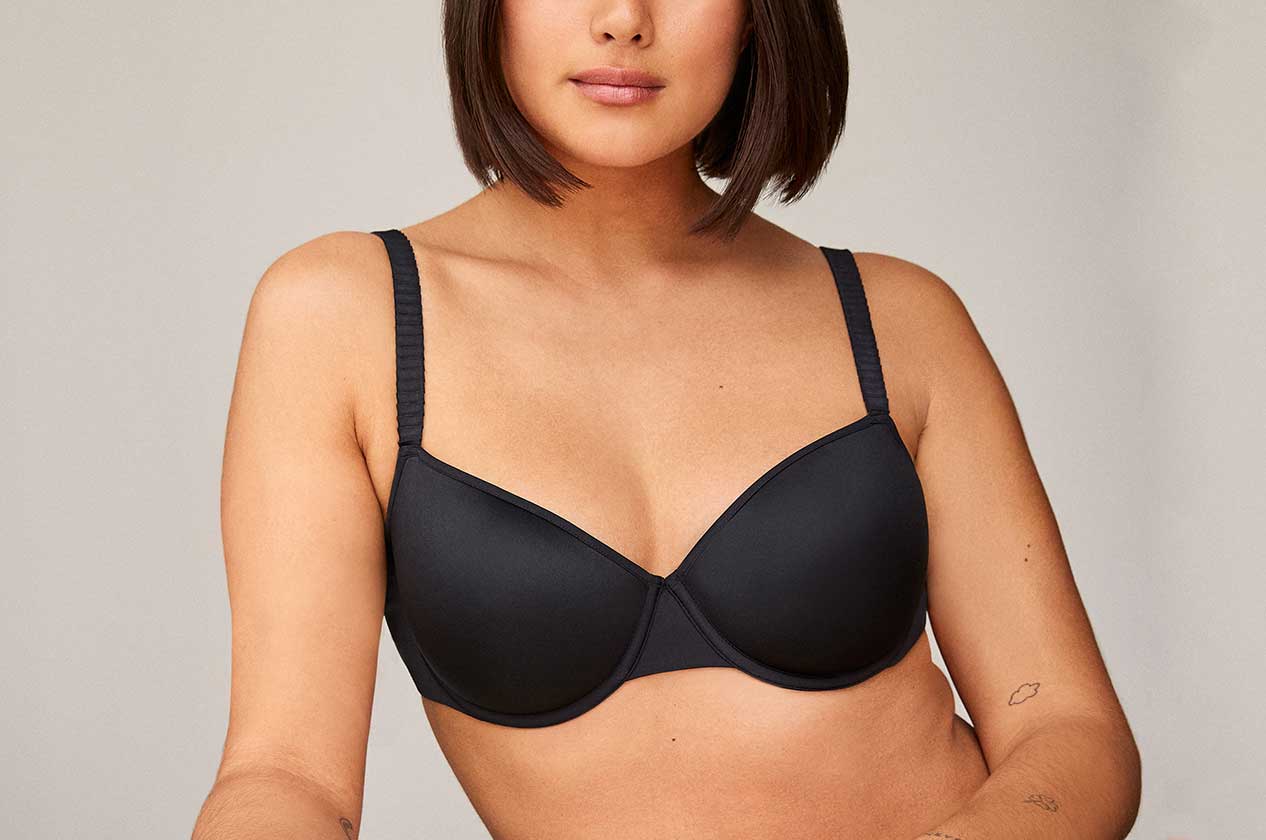

Buying Guides
How Should A Bra Cup Fit
Modified: September 23, 2023
Learn how a bra cup should fit with helpful photos and tips for women. Get the perfect fit and comfort for ultimate support.
(Many of the links in this article redirect to a specific reviewed product. Your purchase of these products through affiliate links helps to generate commission for Under-tec.com, at no extra cost. Learn more)
Table of Contents
Introduction
Welcome to our comprehensive guide on how a bra cup should fit! Finding the perfect bra can be a daunting task for many women, as the right fit is essential for comfort, support, and overall well-being. In this article, we will explore the intricacies of bra cup sizes and provide you with useful tips on how to find the ideal fit for your body. Whether you’re looking for a bra that enhances your natural shape or provides ample support, we’ve got you covered!
Understanding how bra cup sizes work is the first step to finding the right fit. Bra cups are labeled with letters ranging from A to DD (and beyond). The letter represents the volume of the cup, with A being the smallest and DD (or higher) being the largest. However, cup size alone is not enough to determine the right fit. Factors such as band size, breast shape, and individual preferences also play a crucial role.
Next, we’ll delve into the nitty-gritty of finding the right bra cup fit. Proper bra measurement is key to ensuring a comfortable and supportive fit. We’ll provide you with some handy tips on how to measure yourself accurately at home, or you can visit a professional bra fitter for personalized assistance. Once you know your size, it’s time to embark on the journey of trying on different bra cup sizes to see which one suits you best. Remember, finding the perfect fit may require some trial and error, but the end result will be well worth it!
Understanding Bra Cup Sizes
When it comes to bra shopping, understanding bra cup sizes is essential. The letter on a bra label represents the volume of the cup, but it’s important to note that cup size alone is not the sole determinant of a proper fit. Let’s take a closer look at the nuances of bra cup sizes.
Cup sizes are typically labeled with letters ranging from A to DD and beyond, depending on the brand. The cup size directly relates to the difference between your band size and your bust measurement.
For example, if your band size is 34 inches and your bust measurement is 36 inches, you would typically wear a B cup since there is a 2-inch difference. However, cup sizes may vary between brands, so it’s important to try on different sizes to find the best fit for your body.
It’s important to remember that cup size is not static; it changes as your band size changes. This means that a B cup in a smaller band size will have a smaller volume compared to a B cup in a larger band size.
Understanding sister sizes can also help in finding the right fit. Sister sizes are bras with different band sizes but the same cup volume. For example, if your usual size is a 34C, the sister sizes would be a 32D and a 36B. If you find that your cup size fits well, but the band feels too tight or loose, try experimenting with sister sizes to find the perfect balance.
Keep in mind that cup sizes are not absolute measurements of breast size. A D cup, for instance, may look different on someone with a smaller band size versus someone with a larger band size. Breast shape and density also play a role in determining the ideal cup size.
Now that we have a better understanding of bra cup sizes, let’s explore how to find the right fit to ensure comfort and support in the next section.
Finding the Right Bra Cup Fit
Now that you understand the basics of bra cup sizes, let’s dive into finding the right fit for your body. A well-fitted bra cup should provide comfort, support, and enhance your natural shape. Here are some steps to help you achieve the perfect fit:
Step 1: Proper Bra Measurement
Start by measuring your bust and band size. Use a soft tape measure to wrap around your underbust area to determine your band size. Make sure the tape is snug but not too tight. For your bust measurement, wrap the tape around the fullest part of your breasts. Subtract your band size from your bust measurement to get your cup size. This measurement can serve as a starting point, but always try on different sizes to find the best fit for your body.
Step 2: Trying on Different Bra Cup Sizes
Once you have an idea of your size, it’s time to try on different bra cup sizes. Start with the size you measured and work your way up or down depending on how the bra fits. Remember, the bra should feel snug but not overly tight. The underwire should encase your breast tissue completely, and the cups should hold your breasts without any spillage or wrinkles.
Step 3: Evaluating the Fit
Pay attention to how the bra fits in various positions. Move around, raise your arms, and lean forward to ensure the bra stays in place and provides the desired support. The center gore, which is the fabric between the cups, should sit flat against your chest without digging into your breast tissue. The band should feel secure and not ride up your back.
Step 4: Consider Your Breast Shape
Every woman has a unique breast shape, and finding a bra that complements it can make a world of difference. Some common breast shapes include round, teardrop, side set, or fuller on the bottom. Different bra styles will suit different shapes, so keep this in mind while trying on different options.
Remember, finding the perfect bra cup fit may take some time and experimentation. Don’t be discouraged if the first few bras you try don’t fit perfectly. Keep trying different sizes, styles, and brands until you find the ones that provide the comfort, support, and confidence you deserve.
Tips for Proper Bra Measurement
Accurate bra measurement is the foundation for finding the perfect bra cup fit. Here are some tips to ensure you measure yourself correctly:
1. Measure in the Right Place
When measuring your band size, make sure the tape measure is snugly wrapped around your underbust, just below your breasts. Avoid pulling the tape too tight as this can result in an incorrect measurement. For your bust measurement, wrap the tape around the fullest part of your breasts, ensuring it goes horizontally across your back.
2. Stand Straight and Relax
Stand in a relaxed, upright position while measuring yourself. Avoid slouching or leaning forward as it may alter your measurements. Relax your arms by your sides and take slow, even breaths to ensure accurate measurements.
3. Use a Soft Tape Measure
Use a soft, flexible tape measure to ensure accurate measurements. Avoid using a metal or rigid tape measure as it may not provide the same level of precision. If you don’t have a soft tape measure, you can use a string or ribbon and then measure it with a ruler or yardstick.
4. Don’t Measure Over Clothing
To ensure accuracy, always measure your bare skin or wear a thin, unpadded bra while measuring yourself. Clothing can add extra bulk and give an inaccurate measurement.
5. Measure Multiple Times
For the most accurate measurement, measure yourself multiple times and take the average. Measurements can vary slightly depending on factors such as posture and breathing. Take the time to measure yourself a few times to ensure consistency.
6. Get Professional Assistance
If you’re unsure about measuring yourself or want personalized assistance, consider visiting a professional bra fitter. They have experience and expertise in determining the correct bra size and can guide you in finding the perfect fit for your body.
Remember, measuring yourself is just the first step in finding the right bra cup fit. Trying on different sizes and styles will ultimately help you determine which bras provide the best comfort and support for you.
Trying on Different Bra Cup Sizes
Once you have a basic understanding of your bra size, it’s time to try on different bra cup sizes to find the perfect fit. Keep in mind that bra sizing may vary among brands, so it’s important to remain open to different sizes and styles. Here are some tips for trying on different bra cup sizes:
1. Start with Your Measured Size
Begin by trying on the bra size that you measured yourself. Take note of how the bra fits, paying attention to the band, underwire, and cup. Check if the band feels snug but not too tight, and if the underwire encases your breast tissue fully without digging into your skin. Assess if the cups hold your breasts comfortably, without any spillage or gaps.
2. Adjust Band and Cup Size
If the initial size doesn’t feel quite right, consider adjusting the band and cup size. If the band feels too tight and uncomfortable, try going up a band size while reducing the cup size (e.g., from 34C to 36B). If the band feels loose and rides up your back, go down a band size while increasing the cup size (e.g., from 34C to 32D). Keep trying different combinations until you find the best fit.
3. Assess Comfort and Support
As you try on different bra cup sizes, pay attention to how the bras feel in terms of comfort and support. Move around, raise your arms, and lean forward to ensure the bra stays in place and provides the desired level of support. A properly fitting bra should feel secure, without causing any discomfort or irritation.
4. Try on Various Styles
Don’t be afraid to experiment with different bra styles, as they can impact the fit and support. Balconette, plunge, demi-cup, and full-cup bras offer different levels of coverage and shaping. Consider your wardrobe and lifestyle needs when selecting a bra style. Trying on a variety of styles can give you a better idea of what works best for your breast shape and personal preferences.
5. Seek a Second Opinion
If you’re unsure about the fit of a particular bra cup size, don’t hesitate to seek a second opinion. Ask a trusted friend, partner, or a professional bra fitter for their input. Sometimes, a different perspective can help you make a more informed decision.
Remember, finding the right bra cup fit may require some trial and error. Be patient with the process and don’t be discouraged if it takes time to find the perfect fit. Once you find a bra that ticks all the boxes in terms of comfort and support, you’ll experience a world of difference in your everyday wear.
Significance of Proper Bra Cup Fit
Having a proper bra cup fit is more than just a matter of comfort and aesthetics; it has significant implications for your overall well-being. Here are some key reasons why finding the right fit is crucial:
1. Comfort and Confidence
A well-fitted bra cup ensures maximum comfort throughout the day. It eliminates the discomfort of an ill-fitting bra, such as pinching, digging straps, or underwire that digs into your skin. When your bra fits properly, you can move with ease and feel confident knowing your undergarments are working in harmony with your body.
2. Enhanced Breast Health
The right bra cup fit provides the necessary support to your breasts, minimizing excessive bouncing and strain on breast tissue. This support helps maintain breast shape and creates a healthier environment for the ligaments and tissues surrounding the breasts. A properly fitting bra can also promote better lymphatic drainage and circulation, reducing the risk of breast-related discomfort and possible future issues.
3. Improved Posture
A well-fitted bra cup can contribute to better posture by providing support to the chest and upper back. It helps distribute the weight of the breasts evenly, reducing strain on the shoulders and back. With improved posture, you may experience fewer aches and pains in the shoulder, neck, and upper back regions.
4. Optimal Breast Shape and Appearance
A properly fitting bra cup enhances your natural shape and provides a flattering silhouette. It lifts the breasts, accentuates their shape, and creates a more proportional and balanced look. Whether you prefer a subtle boost or a more dramatic lift, the right bra cup fit can help you achieve the desired aesthetic and boost your confidence.
5. Preventing Skin Irritation and Chafing
A bra that fits correctly prevents skin irritation and chafing. When the bra band is too tight or the cups are too small, it can cause friction against the skin, leading to redness, rashes, and discomfort. By finding the right fit, you can minimize the risk of skin-related issues and ensure a pleasant wearing experience.
6. Longevity of the Bra
A bra that fits properly will last longer since it won’t be subjected to excessive stretching or strain. When the bra provides the right support, it is less likely to lose its shape or elasticity over time. This means you can enjoy your favorite bras for a longer period, without worrying about needing to replace them frequently.
Overall, the significance of a proper bra cup fit cannot be overstated. From physical comfort to emotional confidence, finding the right fit is essential for your well-being. Spend the time to measure yourself correctly, try on different sizes and styles, and prioritize your comfort and support. You deserve a bra that makes you feel amazing every time you put it on!
Common Bra Cup Fit Issues
While finding the perfect bra cup fit is the ultimate goal, there are several common fit issues that many women encounter. Understanding these issues can help you identify and address them, ensuring a more comfortable and supportive fit. Here are some of the most common bra cup fit issues:
1. Cup Spillage
Cup spillage occurs when your breasts overflow from the cups, creating the appearance of bulges or gaps. This typically happens when the cups are too small or shallow for your breast volume. To address this issue, try going up a cup size or opting for a bra with a fuller cup style to provide more coverage and space for your breasts.
2. Cup Wrinkling
Cup wrinkling occurs when the cups have excess fabric or appear loose, resulting in wrinkles or creases. This can happen when the cups are too large or when the shape of the cups doesn’t match your breast shape. If you experience cup wrinkling, consider trying a smaller cup size or a bra style that offers more shaping and contouring.
3. Quad Boob Effect
The quad boob effect happens when the bra cups cut into the breasts, creating a bulging effect resembling four breasts. This occurs when the cups are too small, compressing the breast tissue. To alleviate this issue, try going up a cup size or opting for a style with more coverage to ensure a smooth and natural silhouette.
4. Underwire Digging
Underwire digging occurs when the underwire of the bra presses into your breast tissue, causing discomfort and sometimes even pain. This can happen if the underwire is too narrow or if the cups are too small, forcing the wire to sit on your breast tissue instead of encasing it. Consider trying a larger cup size or a bra with a wider underwire for a more comfortable fit.
5. High Center Gore
If the center gore, the fabric between the cups, sits too high on your chest and doesn’t lie flat against your sternum, it can be a sign of an ill-fitting bra. This issue can result from cups that are too small, causing the bra to be unable to fully encase your breast tissue. Trying a larger cup size or a bra style with a lower center gore can help resolve this problem.
6. Uncomfortable or Slipping Straps
If your bra straps dig into your shoulders or constantly slip off, it can indicate an issue with the cup fit. Adjusting the straps alone may not solve the problem. Consider trying a different cup size or a bra style that provides a better overall fit, as the strap issues may be a result of the cups not providing adequate support.
Identifying and addressing these common bra cup fit issues is essential for finding a bra that provides optimal comfort and support. Remember that every woman’s body is unique, so experimenting with different sizes, styles, and brands is key to finding the right fit for you. Don’t be discouraged by initial fit issues; with persistence and patience, you’ll discover the bras that make you feel amazing.
Problems with Ill-Fitting Bra Cups
Wearing bras with ill-fitting cups not only compromises your comfort but also affects your overall well-being. It’s important to understand the problems that arise from wearing bras that don’t fit properly. Here are some of the common issues caused by ill-fitting bra cups:
1. Lack of Support
When your bra cups don’t fit correctly, they fail to provide the necessary support for your breasts. This lack of support can result in discomfort and sagging breasts, which can contribute to long-term posture issues and back pain.
2. Discomfort and Irritation
Ill-fitting bra cups can cause discomfort and irritation. Tight cups can dig into your breasts, causing pain and leaving red marks or indentations. On the other hand, cups that are too large can create friction and chafing against your skin, leading to irritation and rashes.
3. Uneven Breasts or Spillage
If your bra cups are too small, they can create the appearance of uneven breasts. One breast may spill over the cup, while the other may be compressed and flattened. This lack of symmetry can affect your overall silhouette and make you feel self-conscious.
4. Restricted Breathing
Wearing bra cups that are too tight can constrict your chest and restrict your breathing. This can be uncomfortable and may make you feel consistently short of breath or uneasy throughout the day.
5. Poor Posture
Unsupportive bra cups can lead to poor posture as your shoulders and back may compensate for the lack of breast support. Slouching or hunching forward can become habitual, causing strain on your muscles and leading to chronic pain and discomfort.
6. Negative Body Image
Ill-fitting bra cups can negatively impact your body image and self-confidence. When your breasts aren’t properly supported or shaped, it can make you feel self-conscious about your appearance. Wearing bras that fit well and enhance your natural shape can boost your confidence and encourage a positive body image.
It’s crucial to address the problems caused by ill-fitting bra cups by finding the right size and style that suits your body. Investing time in measuring yourself correctly and trying on different bras can make a significant difference in your comfort, support, and overall well-being.
Finding the Right Bra Cup Fit for Different Breast Shapes
Every woman has a unique breast shape, and finding a bra that complements your shape is essential for a comfortable and supportive fit. Different breast shapes require different styles and features to ensure the best fit. Here’s a guide on finding the right bra cup fit for different breast shapes:
1. Round Shape
Women with round-shaped breasts often have equal fullness on the top and bottom. For this breast shape, a full-cup or demi-cup bra can provide excellent coverage and support. Look for bras with molded cups or padding to enhance your natural shape and create a smooth silhouette.
2. Teardrop Shape
Teardrop-shaped breasts have more fullness at the bottom and taper towards the top. To flatter this shape, try bras with balconette or demi-cup styles, as they lift the breasts and create a rounded appearance. Look for bras with underwire to provide additional support and shape.
3. Side Set Shape
If your breasts are fuller on the sides and have a larger gap in the center, you likely have a side set shape. Balconette or push-up bras can work well for this shape, as they provide lift, center the breasts, and create a more rounded look. Look for bras with adjustable straps to customize the fit for your unique breast positioning.
4. Fuller Bottom Shape
For women with breasts that are fuller on the bottom, a bra with a full cup and good coverage is recommended. Balconette or full-cup bras with supportive underwire can lift the breasts and create a balanced shape. Look for bras with a wider band to minimize any discomfort or bulging at the bottom of the cup.
5. Asymmetrical Shape
Many women have breasts that are slightly asymmetrical in size or shape. In this case, it’s essential to choose a bra that accommodates the larger breast while still providing support for the smaller one. T-shirt bras or bras with removable padding can help even out the appearance and provide a more symmetrical look.
6. Pendulous Shape
Pendulous or drooping breasts require bras with strong support and lift. Full-cup bras with reinforced side panels and wide, adjustable straps can provide the necessary structure to lift and center the breasts. Look for bras with a three-part cup design to shape and support the breasts for a more lifted and youthful appearance.
Keep in mind that breast shape is just one factor to consider when finding the right bra cup fit. It’s essential to measure yourself correctly and try on different sizes and styles to determine what works best for you. Be patient during the process, and don’t be afraid to seek professional assistance to ensure you find bras that provide the optimal combination of comfort, support, and style for your unique breast shape.
Conclusion
Finding the right bra cup fit is crucial for every woman. It ensures comfort, support, and confidence throughout the day. By understanding bra cup sizes, learning how to measure yourself properly, and trying on different sizes and styles, you can discover the bras that provide the perfect fit for your body.
Remember that bra cup sizes are not static and may vary between brands. It’s essential to be open-minded and willing to experiment with different sizes to find the best fit. Consider factors like band size, breast shape, and personal preferences when selecting bras.
Proper bra cup fit offers numerous benefits. It enhances your comfort, promotes better breast health, improves posture, and enhances your natural shape and appearance. On the other hand, ill-fitting bra cups can lead to a lack of support, discomfort, skin irritation, and negative body image.
Don’t overlook the importance of finding the right fit for different breast shapes. Whether you have a round, teardrop, side set, or pendulous shape, there are bras designed specifically to flatter and support your unique breast shape.
Remember to listen to your body and prioritize your comfort and well-being. Be patient with the process and don’t get discouraged if it takes time to find the perfect fit. Keep trying different sizes, styles, and brands until you find the bras that make you feel amazing.
In the end, the right bra cup fit can make a world of difference in your everyday life. It boosts your confidence, enhances your silhouette, and allows you to move with ease and comfort. Embrace the journey of finding the perfect fit and enjoy the benefits of a well-fitted bra. You deserve it!
